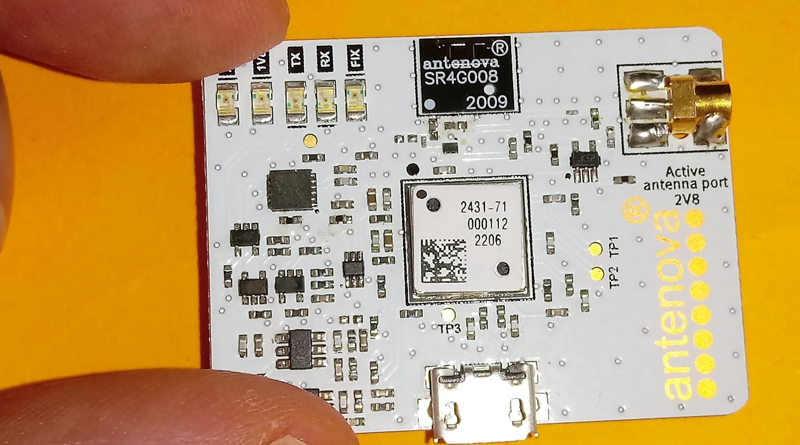Antenova’s compact low-power GNSS receiver module extends runtime by 500%
consumption, reduced five-fold to enable smaller tracker designs, and trackers that run for five times longer.
The M20071 module is for small tracking devices that operate from Li-ion batteries, where a lower power requirement is a clear advantage. These are typically small mobile trackers, pet trackers, personal fitness devices, and location trackers for bikes and e-scooters.
The M20071 tracks the GPS, Galileo, GLONASS, and BeiDou constellations simultaneously, this improves position accuracy, particularly in urban environments. Based on the latest generation chip from Mediatek, it draws 17 mW of power when receiving GPS only, and 21 mW receiving all constellations.
GNSSNOVA M20071 measures 9.0 mm x 9.0 x 1.8 mm. Pairing this with one of Antenova’s compact SMD antennas makes a compact RF solution and a way to realize slimmed-down tracker designs. Antenova offers several GNSS antennas to enable a compact RF product to be designed – in particular the low-profile Sinica chip antenna and the Bentoni FPC antenna.
Says Michael Castle, Product Marketing Manager at Antenova, “Designers using M20071 and our low profile GNSS antennas can specify much smaller designs than with the usual patch antennas.” Standard GNSS modules typically draw 90-100 mW of power, so Antenova’s reduction in power consumption to 17 mW gives a significant increase in operational time, over 500%. Designers can either build a product to run five times longer or specify a smaller battery to save space in the design.
The GNSSNOVA M20071 module contains an integrated SAW (surface acoustic wave) filter and LNA (low noise amplifier), TCXO, and RTC to improve performance and speed up the first position fix.
The M20071 includes EASY™ (Embedded Assist SYstem) which speeds up TTFF (time to first fix). It generates synthetic ephemeris data rather than downloading it from the satellite, thus reducing power consumption. The warm start time using EASY is around 2 secs compared to 25 secs without EASY. For applications that wake up periodically to get a position, EASY further reduces total power consumption, so a smaller battery can be specified. M20071 also includes EPO which is Assisted-GNSS. EPO receives assistance data from a website to speed up the TTFF.

